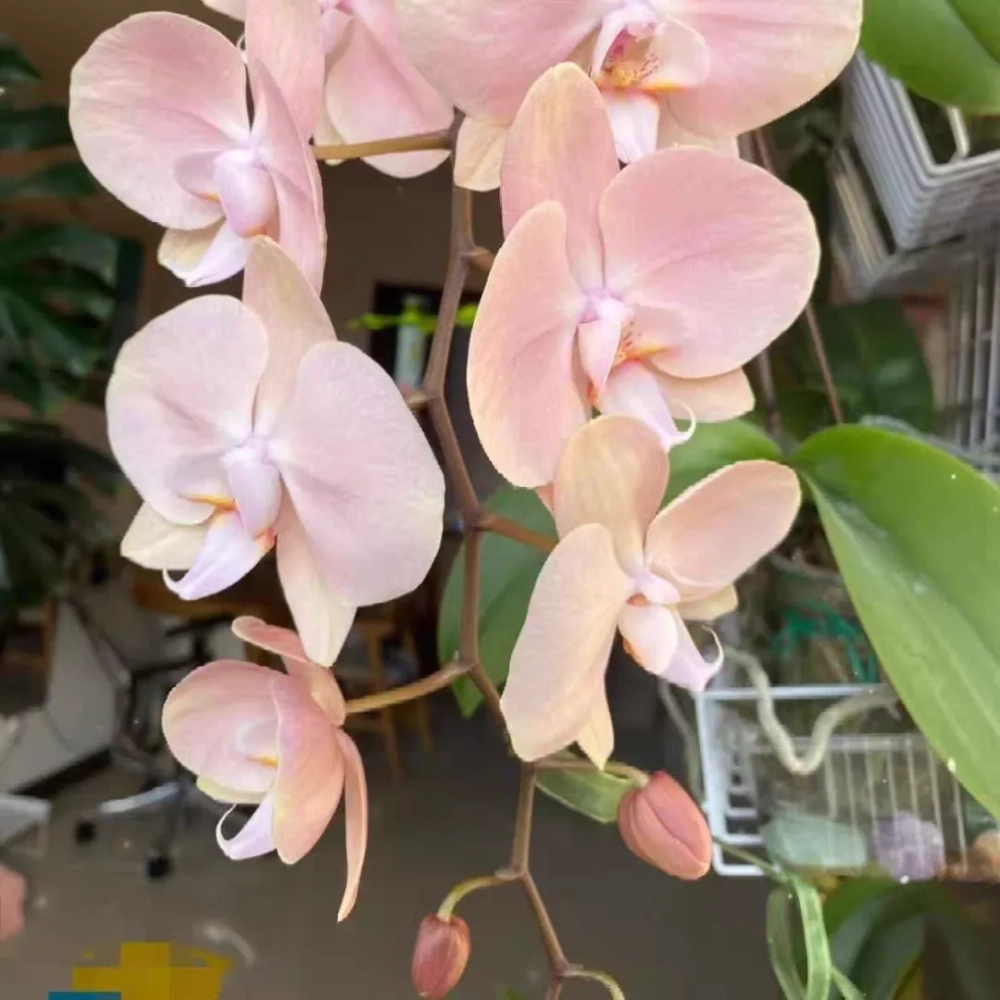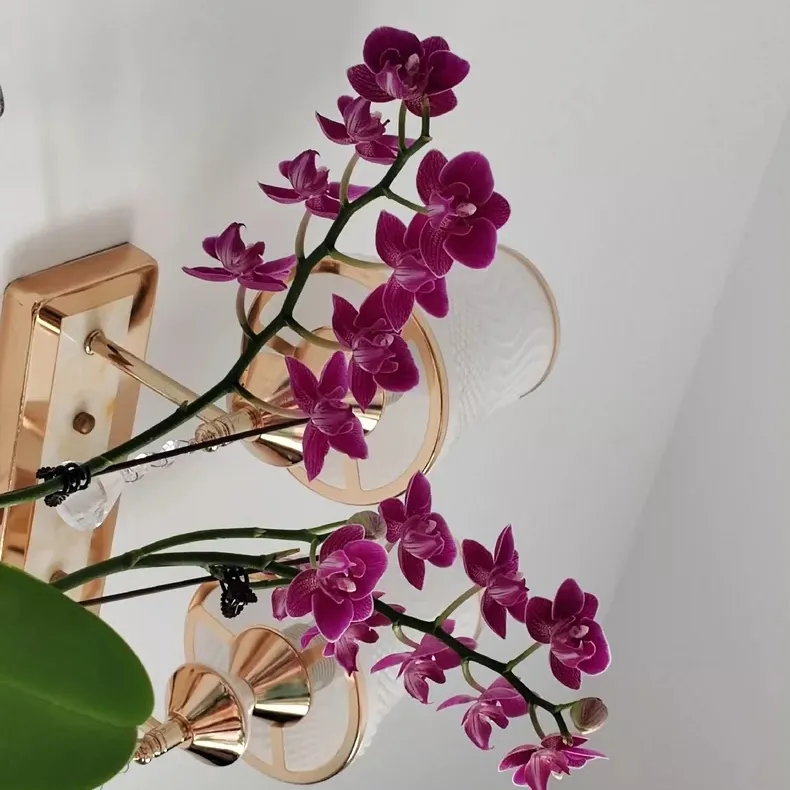Phalaenopsis orchids are beautiful and popular ornamental plants. However, when Phalaenopsis orchids finish blooming, how should they be dealt with, especially regarding whether the withered flowers need to be cut off.
After Phalaenopsis orchids finish blooming, the primary task is to carry out pruning. The main goal of pruning is to remove the withered flowers and flower stems to reduce the ineffective consumption of nutrients, while maintaining the neatness and beauty of the plant. When pruning, sharp scissors should be used, and it is necessary to ensure that the scissors have been disinfected to avoid the plant being infected by pathogens. The pruning position is usually at the part of the flower stem below the flower. It is appropriate to retain about 2-5 centimeters starting from the node of the stem. If the flower stem has started to turn yellow or wither, it is best to cut off the entire flower stem from the base to avoid further consumption of nutrients or the occurrence of diseases and pests.
Some flower enthusiasts may be hesitant about whether to keep the flower stem in the hope of a second bloom. In fact, this depends on the size and health condition of the Phalaenopsis orchid plant. For small Phalaenopsis orchid plants, since they have fewer roots and the stored nutrients have been exhausted during the first blooming, it is not recommended to keep the flower stem in the hope of a second bloom. For robust plants with more than 5 leaves, 3-4 nodes of the lower half of the flower stem can be retained, and the other parts can be cut off. In about 10 days, a new flower stem may emerge from the uppermost node and bloom again. But even so, it is necessary to pay attention to observing the growth condition of the plant to ensure sufficient nutrient supply.
Phalaenopsis orchids consume a large amount of nutrients during the blooming period. Therefore, it is necessary to change the pot and soil in a timely manner after blooming to supplement nutrients and promote the growth of the plant. When changing the pot, a pot slightly larger than the original one should be selected to meet the growth needs of the roots of Phalaenopsis orchids. But do not use an overly large pot to prevent water accumulation in the soil from causing root rot. When changing the soil, loose, breathable, and well-drained soil should be selected, such as pine needle soil, leaf mold soil, etc. These soils are rich in humus and trace elements, which are helpful for the growth and blooming of Phalaenopsis orchids. During the process of changing the soil, all the old soil should be removed, and the overly long and aged roots should be pruned to promote the growth of new roots.
After blooming, Phalaenopsis orchids need appropriate management of water and fertilizer to promote the growth and recovery of the plant. When watering, the principle of "watering when the soil is dry and seeing it moist" should be followed, that is, water after the soil surface is slightly dry to avoid water accumulation causing root rot. At the same time, attention should be paid to maintaining the environmental humidity, and the air humidity can be increased by spraying and other methods. When fertilizing, fertilizers suitable for the growth of Phalaenopsis orchids should be selected, such as special fertilizers for orchids, compound fertilizers, etc. These fertilizers are rich in the nutrient elements required by Phalaenopsis orchids, which helps to promote the growth and blooming of the plant. When fertilizing, the principle of "applying thin fertilizers frequently" should be followed, that is, the amount of fertilizer applied each time should not be too much, but fertilization should be carried out regularly to ensure sufficient nutrients for the plant.
Phalaenopsis orchids like an environment with sufficient scattered light. Therefore, after blooming, they should be placed in a position with good light, but avoid direct sunlight to prevent the leaves from being burned. At the same time, attention should be paid to maintaining an appropriate temperature. The suitable growth temperature for Phalaenopsis orchids is 18-28°C. Too high or too low a temperature will affect their growth and blooming. In winter, attention should be paid to taking warming measures to prevent the plant from being damaged by frost.
Phalaenopsis orchids may be invaded by diseases and pests during the growth process. Therefore, during the post-blooming maintenance process, the leaves and roots of the plant should be regularly inspected, and diseases and pests should be dealt with in a timely manner once found. For common diseases and pests, such as aphids, red spider mites, etc., special insecticides can be used for prevention and control. At the same time, attention should be paid to maintaining the cleanliness of the environment to avoid the breeding of diseases and pests.
In conclusion, the treatment of Phalaenopsis orchids after they finish blooming is a comprehensive process, including pruning the withered flowers, changing the pot and soil, reasonable management of water and fertilizer, providing appropriate light and temperature, as well as the prevention and control of diseases and pests. Only by doing these tasks well can Phalaenopsis orchids maintain a good growth state and prepare for the next round of blooming.
How to deal with Phalaenopsis orchids after they finish blooming?

Share with
Tagged in :




Leave a Reply